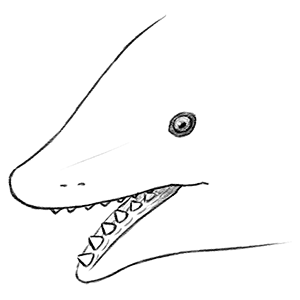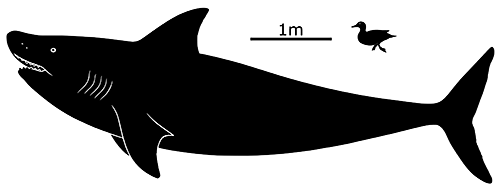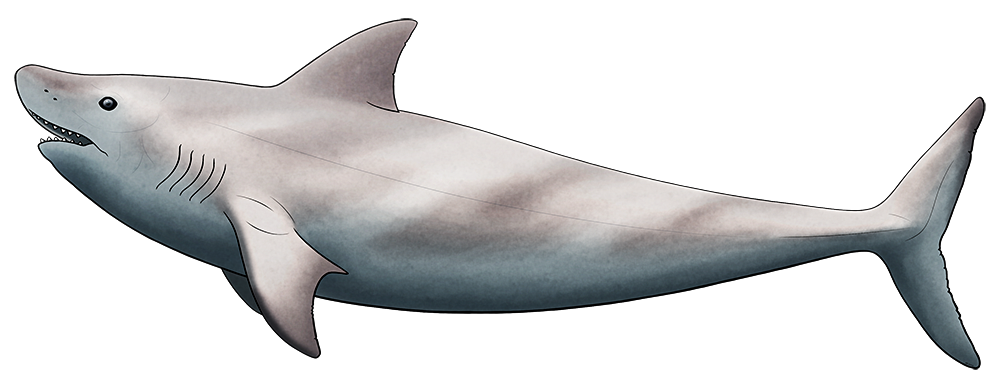The eugeneodontidans were a group of cartilaginous fish which convergently evolved to resemble sharks but were much closer related to modern chimaeras. Due to their cartilage skeletons usually little more than their teeth are found as fossils, and for a long time their ecology and life appearance has been poorly understood because of just how weird those teeth were.
These fish had unique “tooth whorls” in their lower jaws, and the most famous member of the group is probably Helicoprion, with the exact anatomical placement of its buzzsaw-whorl only being properly figured out in 2013.
But another eugeneodontidan named Edestus was equally strange.
Living during the late Carboniferous, about 306-299 million years ago, Edestus giganteus was the largest species in the genus, reaching estimated lengths of up to 6m (19’8″), similar in size to a modern orca or a particularly large white shark.
Let’s take a closer peek at that mouth.

Yes, that’s a single central row of teeth in both its upper and lower jaws.
Edestus‘ whorls grew in curving “banana-shaped” brackets that resembled an enormous pair of pinking shears, with new teeth being added on at the back and the oldest teeth occasionally being ejected off from the front. How this jaw arrangement worked was a longstanding paleontological mystery, with various bizarre ideas being proposed over the years – until a particularly well-preserved skull was analyzed in early 2019, revealing a two-jointed system in its lower jaw that allowed it to move its tooth brackets quickly back and forth, using a “snap-and-slice” motion to grab hold of prey like fish and soft-bodied cephalopods and cut them in half.
Along with body impressions from other related eugeneodontidans like Fadenia, showing a shark-like tail and a complete lack of rear fins, we now have a much better picture of what this bizarre fish probably looked like.


